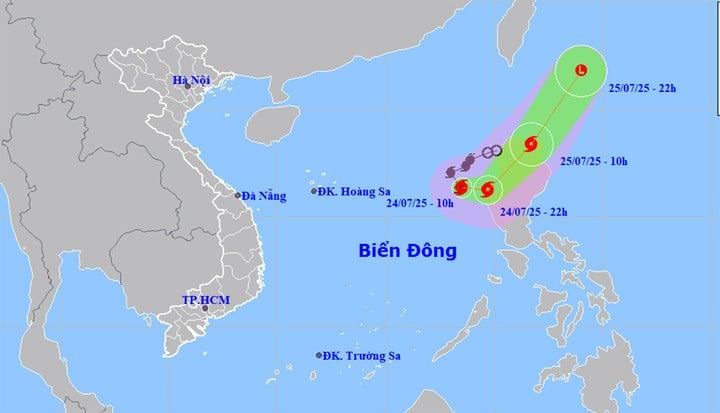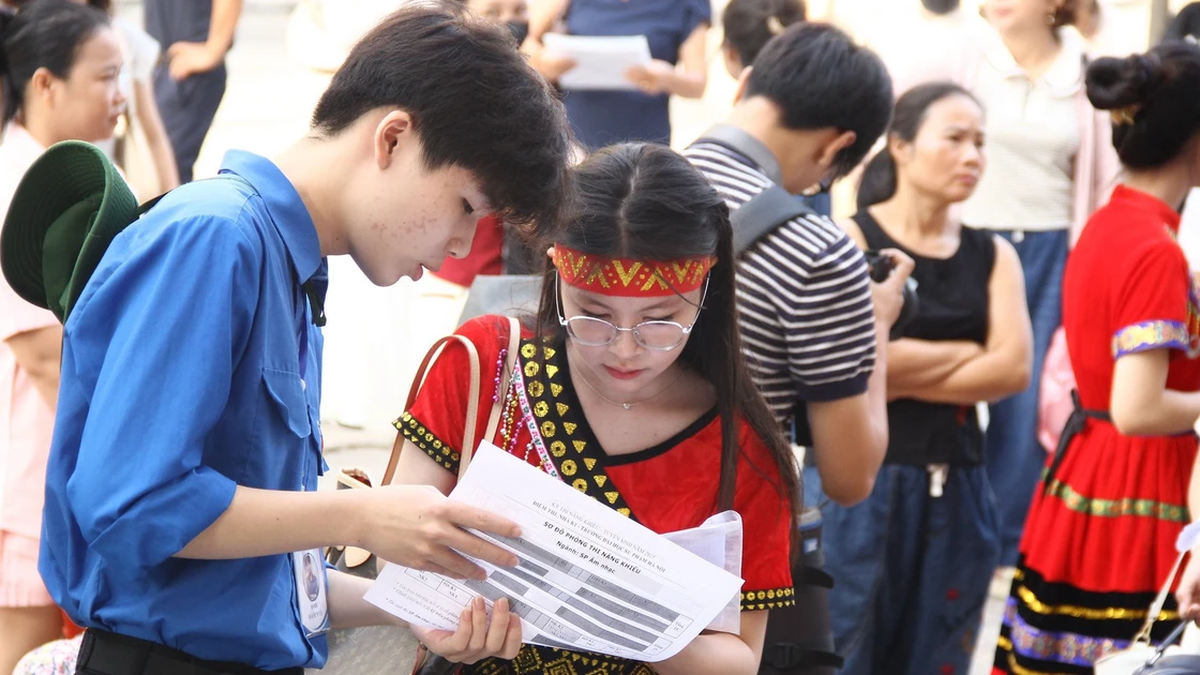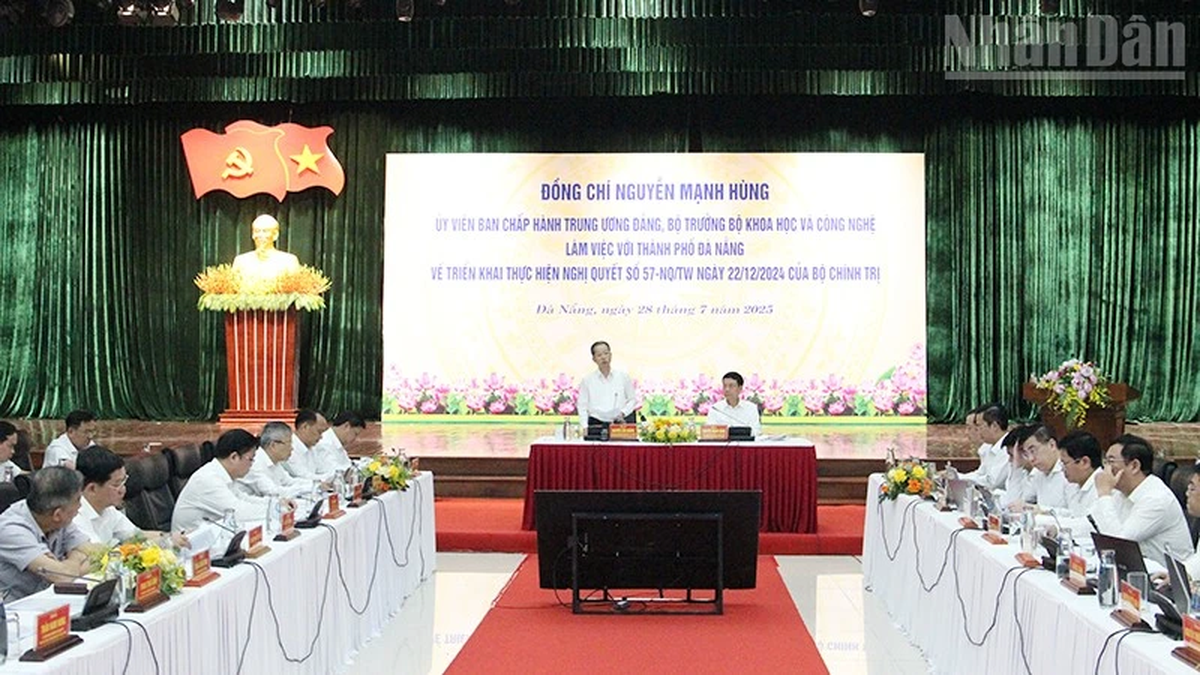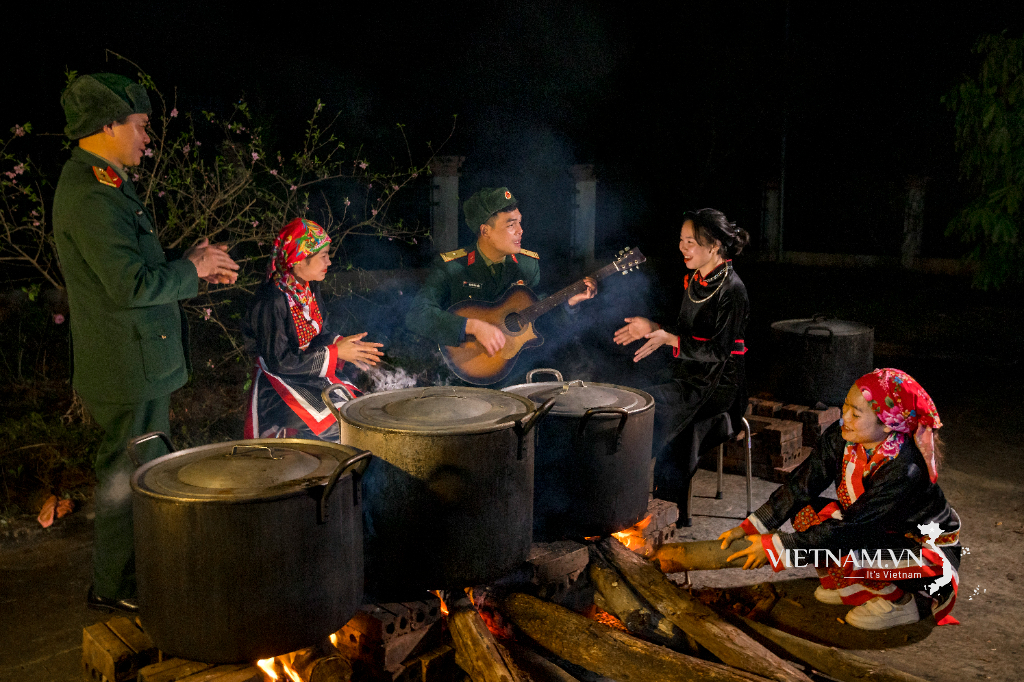Storm No. 4 has the international name Co-May (Co May). This is one of 10 storm names proposed by Vietnam in the list of storm names of the Asia- Pacific Regional Typhoon Committee.
The name “May Grass” comes from a plant that grows naturally in the plains, especially along rivers in Vietnam, with small silver-purple flowers that bloom in the summer, the scientific name is Chrysopogon Aciculatus.
According to the National Center for Hydro-Meteorological Forecasting, at 10:00 a.m. on July 24, the center of storm No. 4 Co May was located in the eastern sea of the North East Sea. The strongest wind near the center of the storm was level 9-10 (75-102 km/h), gusting to level 12, moving southeast at a speed of about 10 km/h.
Storm No. 4 of 2025 will continue to "swarm" the eastern sea area of the North East Sea in the next 24 hours, with unchanged intensity, then enter the northern area of Luzon Island (Philippines), with gradually weakening intensity.
According to the meteorological agency, storm No. 4 Co May is unlikely to affect the mainland and coastal areas of our country (Source: NCHMF)
List of proposed Vietnamese storm names
Since 2000, Vietnam has nominated the Storm Committee for names of storms in the Northwest Pacific region with 10 storm names including: SonTinh (Son Tinh), Lekima (Lekima), Ba Vi (Ba Vi), Conson (Con Son), Sonca (Son Ca), Trami (Tra Mi), Halong (Ha Long), Vamco (Vam Co), Songda (Song Da), Saola (Sao La).
In 2021, Vietnam proposed to rename some storms when they caused great damage or at the request of member countries. To date, there have been the following storm name changes: Saomai changed to Sontinh (Son Tinh) in 2008; Lekima changed to Co-May (Co May) in 2021; Vamco changed to Bang-Lang (Bang Lang) in 2022; Conson changed to Luc-Binh (Luc Binh) in 2024; Saola (name proposed by the Philippines).
By October 2024, the storm names proposed by Vietnam on the Storm Committee system and the World Meteorological Organization (WMO) include: Sontinh (Son Tinh), Co-May (Co May), Bavi (Ba Vi), Luc-Binh (Luc Binh), Sonca (Son Ca), Trami (Tra Mi), Halong (Ha Long), Bang-Lang (Bang Lang), Songda (Song Da), Saola (Sao La).
Why are storms named?
According to the meteorological agency, storms have many different names depending on the area where they originate. Storms that form in the Atlantic Ocean are called Hurricanes; those that form in the Pacific Ocean are called Typhoons; those that form in the Indian Ocean are called Tropical Cyclones.
Storms can stay at sea for an average of 7-8 days or longer. In the same area, at the same time, there can be 2 to 3 storms, or even more. Therefore, people have named storms to avoid confusion in providing information about each storm.
During World War II, US Army and Navy meteorologists used women's names to name hurricanes.
Tropical cyclones in the Northeastern Pacific Ocean were named after women from 1959 to 1960, and both male and female names were used in 1978. Tropical cyclones in the North Indian Ocean were not named. Tropical cyclones in the Southwestern Indian Ocean were named in 1960. Tropical cyclones in the Australian and South Pacific Oceans were named in 1964, and both male names were used in 1973.
Typhoons in the Northwest Pacific Ocean (including the South China Sea of Vietnam) were officially named after women starting in 1945, and men's names were also used in 1979. Since January 1, 2000, typhoons in the Northwest Pacific have been named from a new and very different list of names.
The newly added names include names proposed by 14 countries and territories in the Asia-Pacific region that are members of the World Meteorological Organization's Typhoon Committee. Each member provided 10 names, creating a list of 140 storm names.
Storms forming in the Northwest Pacific Ocean are assigned names by the World Meteorological Organization (WMO) to the Tokyo Tropical Storm Warning Center of the Japan Meteorological Agency.
The new list of storm names has two differences from the previous list. First, very few storm names are names of people, but most are names of flowers, birds, plants, animals, and even foods.
Second, the list of storm names is not arranged in alphabetical order but in alphabetical order of the countries that proposed the names.
One thing to note is that after a few years of summarizing, with storms causing heavy damage to the countries contributing names, those storm names will be removed from the list of storm names and replaced with a new name. Therefore, the list of storm names above is not fixed and is always being supplemented.
According to the National Center for Hydro-Meteorological Forecasting, the 2025 storm season in the Northwest Pacific has become very busy with 3 storms operating at the same time. Co May at 118 longitude, Francisco at 128 longitude and Krosa at 140 longitude East strengthened from a tropical depression at 10:30 on July 24. Storm Krosa is forecast to move north, not entering the East Sea. |
Source: https://baolangson.vn/bao-so-4-nam-2025-ten-gi-dang-o-dau-tren-bien-dong-5054082.html



























![[Photo] National Assembly Chairman attends the seminar "Building and operating an international financial center and recommendations for Vietnam"](https://vphoto.vietnam.vn/thumb/1200x675/vietnam/resource/IMAGE/2025/7/28/76393436936e457db31ec84433289f72)









































































Comment (0)